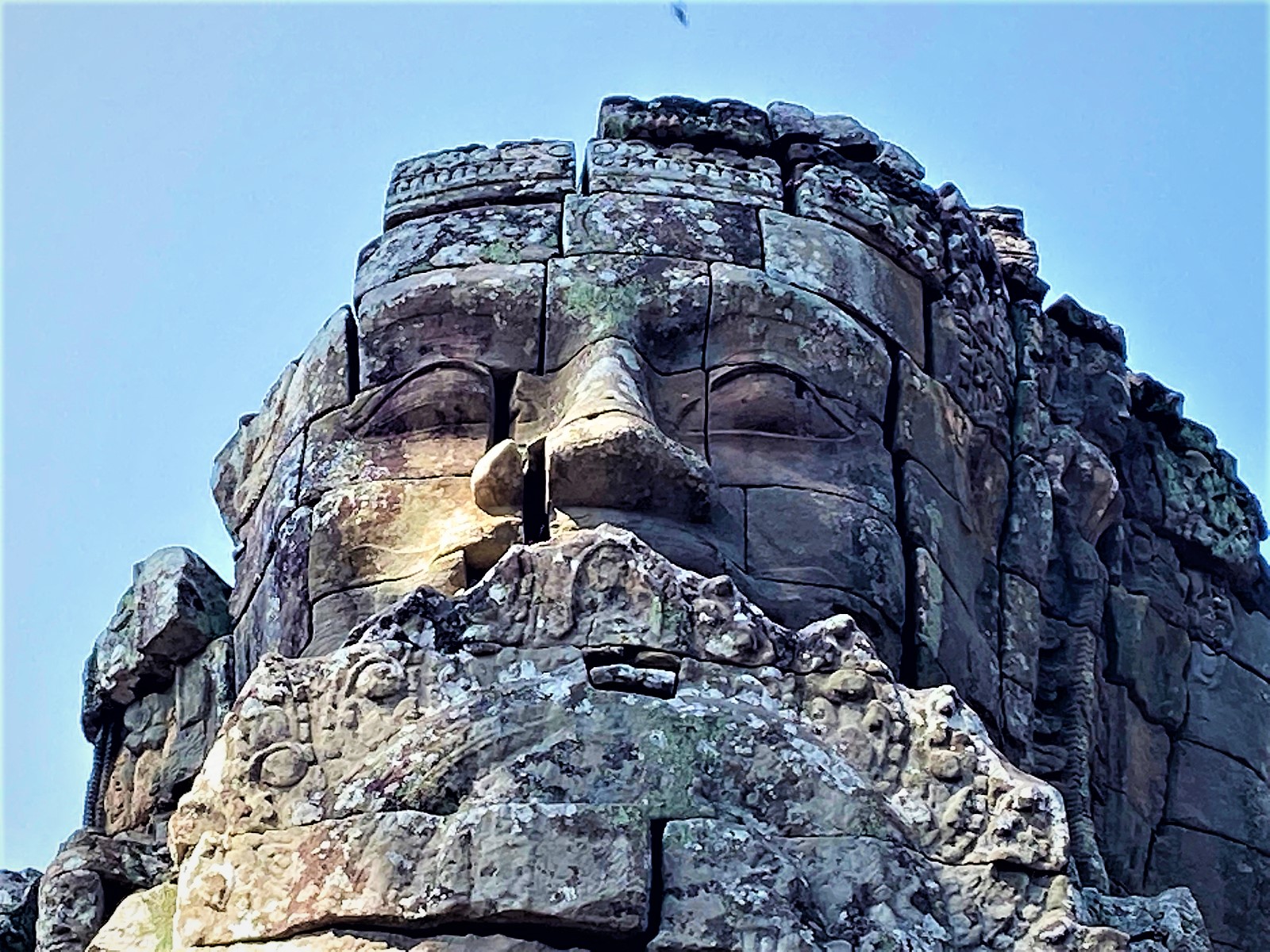Bayon
One of the most majestic temples in the Angkor complex, Bayon is at the centre of Angkor Thom, close to Angkor Wat. This is one of the unmissable attractions in Cambodia. Its many faces are some of the most famous and puzzling in Asia.
History of Bayon
The temple was built in the 12th to 13th centuries by Jayavarman VII and finished by Jayavarman VIII. It is a large State Temple defined by the many large stone faces carved into its towers. There are 37 towers currently standing at Bayon. Most, but not all, have four large faces carved on the north, south, east and west, some towers have three, or two faces.
After its building, the temple was added to by successive kings. Its layout is unique among the temples, with its ascending towers of faces and a round central tower over 40 metres tall. There are two enclosures surrounding the central mountain of towers and entrance on the east has a large terrace walkway guarded by lions.
The Face of Bayon

The subject of the enigmatic Bayon face carvings is a matter of debate. The current speculation is between Loksava the Bodhisattva, or a combination of Jayavarman VII and Buddha. Bayon also features many metres of bas-reliefs, which depict Khmer history and the life of people at the time. As you stand at the temple, the faces seems to follow you around. It really is a most amazing site.
Its style can be seen in other temples in the area, particularly Ta Prohm, Banteay Kdei, Srah Srang and Preah Khan.
Where is Bayon?
It is in Angkor Thom at the heart of the Angkor site near Siem Reap.
Nearby Attractions
It is the next temple complex you come across once you pass Angkor Wat.



